Chorals russes des xvi-xviiie siècles
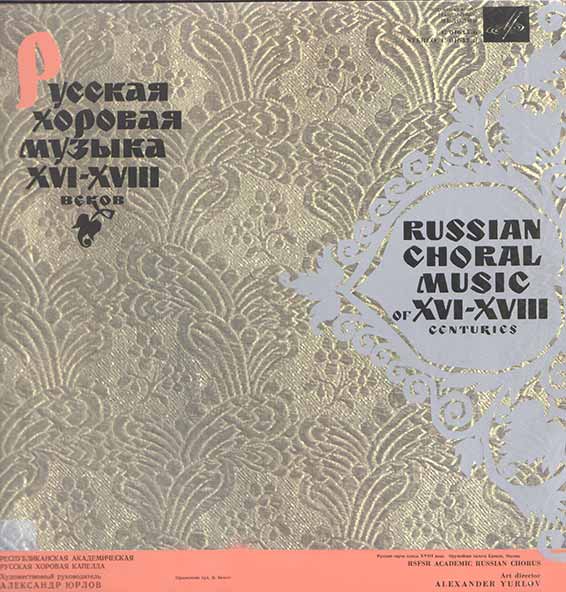
Russian Choral of xvi-xviie centuries, RSFR Academic russian Chorus, sous la direction d'Alexander Yurlov, Мелодия (Melody) 1968 (C 01647 8), 2 LP 33 t.
1 A. Six vieilles mélodies : 1. Stikhera (hymne de la résurrection), Echols 1 (manuscrit en notation kryukovy (crochets), transcrite par M. Brazhnikov.2. Auteurs inconnus (xvi-xviie siècle), Stikhera, echols 6, echols 5. 3. Tsar Fedor (1661-1662), À juste titre, chœur de l'Académie de la République russe (groupe masculin), M. Zlotopolsky (basse), I. Kruchkov (ténor).
1 B. (suite) : 4. Vieille mélodie à trois voix (xviie siècle), notation kryukovy, transcrite par M. Brazhnikov. 4. La mer orageuse roule ses vagues, auteur inconnu (xviiie siècle), chœur masculin. 5. N. Dilestsky (v. 1630-v. 1680), Chant solennel à quatre voix. 6. N. Kalashnikov (fin xviie-début xviiie) Concert pour douze voix.
2 A. Chant choral russe du xviiie siècle : 1. M. Berezovsky (1745-1777), Ne m'abandonne pas quand je serai vieux, pour chœur. 2. D. Bortniansky (1751-1825), concert no 24 pour chœur.
2 B. Bortniansky, Chanson de Chérubin no 24. A. Vedel (1767-1806), concert no 3, pour chœur.
The works represented on this record characterize the development of Russian choral music from the 16th to the beginning of the 18th century. Already in ancient times choral art flourished in Russia. Its roots were connected with the inexhaustible treasury of popular creative work, many examples of which remained in the people’s memory for centuries. But folk songs reflecting and penetrating all aspects of life were not recorded in those remote times; they were communicated by word of mouth and inevitably underwent partial changes in the process. The earliest manuscripts of these songs appeared only in the Second half of the 18th century.
After Russia had officially adopted Christianity, the building of temples and monasteries decorated with pictures and every kind of church-plates, was accompanied by the development of church song music. Church chants were recorded by means of neume notation, a special system of symbols which were called « znamiona » (in Old Slav « znamya » means « sign »). Hence, this style of singing was called namenny or kryukovy (« kryuk » or « Hook » in English) was the most widely used symbol).
« Znamenny » chants were sung by a male choir in monophonic style without accompaniment, but in spite of the fact that the possibilities here were extremely limited, the composers of old attained great artistic skill in composing expressive, and broad melodies, full of noble and austere beauty. The fundamentals of « znamenny » singing were borrowed from Byzantium but in time they were radically modified on Russian soil. Russian « raspevshchiks » (old term for « composer ») who were common people by birth, introduced folkloristic features into church songs.
« Znamenny » chants and canticles were the main form of Russian professional musical art for over five hundred years, from the 11th to the middle of the 17th century. The last period, embracing the 16th and the first half of the 17th centuries, was marked by especially intensive activities of a galaxy of talented « raspevshchiks » who created a great number of superb works and in doing so considerably enriched the very forms and expressive devices of the Old Russian art of vocal music.
Fedor Krestianin (the 16th century), one of the distinguished masters of the « znamenny » style who established a school of his own, for some time employed at the court of Ivan IV, a keen conoiseur of singing. The only works by Fedor Krestianin to reach us are the Twelve evangelical stikheras (stikhera is a kind of church song).
In 1955 a rewritten copy of this composition which dates back to the 17th century, was found in the village Ust-Tsilma on the bank of the river Pechora. M. V. Brazhnikov deciphered the whole cycle of stikheras and translated them into contemporary notation. The first stikhera is recorded on this disc.
Stikhera of echos 6, dogmamist and two stikheras of echos 5 are taken from different 17th century « kryukovy « manuscripts. The indication of the echos is connected with the system of the eight « echos » underlying « znamenny » chants. All songs were arranged according to these voices (or glas), each of them had its characteristic melodic phrases.
Befittingly of Tsar Fedor, apparently belongs to Fedor Alexeyevich (elder brother of Peter I) who ruled in 1676-1682. The indications given in the manuscript do not make it possible to define wether this song was composed by Tsar Fedor himself or whether the tsar merely admired it greatly and it was always performed in his presence.
« Cherubic song » (three-part song) gives an idea of the features of early Russian polyphonic singing which developed in the in the 16th-17th centuries within the framework of the « znamenny » chant. Attempts at polyphonic arrangement of the « znamenny » melodies, not numerous at that time, were indicative of the endeavour to create new forms and to extend expressive potentials : the art of singing. The example recorded is characteristic of this genre because of its subtlety, originality of tone colour, affinity folk polyphonic singing with its free flow of melody and hold application of dissonant sounds.
The stromy sea rolls the waves pertains to a new genre of polyphonic which appeared in Russia in the second half of the 17th century. Chants, as these songs were called, were first written on religious topics, later they also covered diverse secular subjects. Their form represents a couplet three-part song with a clearly expressed harmonic basis. The melodics of chants is connected with Russian, Ukrainian and Polish folk songs and with different kinds of dance music. One of the most popular chants of the 18th centurv. « The stormy sea rolls the waves » dates back to the epoch of Peter I and reflects the romance of long voyages, troubles and cungers characteristic of that time.
Nikolai Pavlovich Diletsky, an Ukrainian composer, teacher and music theorist, lived and worked in Moscow in the seventies and eighties of the 17th century. He was one of the most prominent advocates of the new polyphonic style, the so-called « partesny » singing i. e. singing by parts or voices, which succeeded the medieval « znamenny » chant. The assertion of « partesny » singing was connected with the growth of secular humanistic principles in Russian culture on the border of the 17th and 18th centuries. The Works of this genre are distinguished by their bright and buoyant melodics, harmonic integrity and saturation, and vivacity of melodies and rhythms. These features are vividly represented in a small four-part song by Diletsky « Praise the name of God ».
The « partesny » style was strikingly expressed in the form of a choral concerto — a large, monumental composition, consisting of several sections combined into one integral piece. The « par tesny » concertos were written for 8, 12, 24 and sometimes even for 48 parts. The best works of this genre manifest a considerably hight level of the composers’ skill. The performance of such compositions called for highly qualified choral groups and sometimes virtuosic execution. A typical feature of such a concerto was was the contrast of fully choral sounding (tutti) and separate groups of voices standing out against the full choir.
« Cherubic song » (for 12 parts) by Nikolai Kalashnikov is written in the form of a concerto. The author worked at the beginning of the 18th century and wrote a great number of concertos and other polyphonic choral compositions, which were highly appreciated by his contemporaries.
M. Berezovsky, D. Bortniansky and A. Wedel were eminent representatives of choral art in Russia and the Ukraine in the end of the 18th century. They were highly gifted musicians and outstanding professional masters and were able to use diverse expressive means of choral writing. The first two also worked in other musical genres. They received musical training at the St. Petersburg Court choir, then perfected their skill in Italy. Berezovsky passed the necessary examinations and was honoured with a title of Academician-Composer at the Bologne Academy of Music, which was famous at that time. His opera « Demophont »staged in Leghorn in 1773 was a success. In the following years, several operas by Bortniansky were staged in Italian theatres. Bortniansky also wrote a number of chamber instrumental ensembles, sonatas for piano and romances.
However, choral music remained the principal field for both composers. They created a new type of Russian choral concerto, in which they exploited the achievments of classic instrumental music and opera of the 18th century. In the concertos by Berezovsky, and Bortniansky, noble simplicity, harmony and lucidity, characteristic of the art of classicism, are combined with great emotional expressiveness and warmth. Their compositions written after religious texts embodied profoundly humane, realistic emotions and experiences. The form of their concertos approaches the classic sonata-symphony cycle, but the connection between separate sections (they follow each other without interruption) is more close. Final sections of the concertos are often written in the form of a fugue.
The fact that Maxim Sozontovich Beregovsky (1745-1777) left a small creative heritage is accounted for by the tragic circumstances of his personal life. Having won recognition in Italy, he returned home but could not find adequate application for his abilities and committed suicide. Few works by Berezovsky which have been preserved to our time betoken his great and strong talent. Among his best compositions is the concerto « Don’t abandons me when I am old », the music of which is penetrated with profound and clearly percepted dramatic emotionality. The concerto ends with a dynamic fugue.
Dmitri Stepanovich Bortniansky (1751-1825) is a classical composer of Russian choral church music. He wrote 45 concertos (ten of them are for two choirs) and numerous other compositions for the choir. Many of them were very popular at that time. Bortniansky’s talent had milder and more lyrical qualities than that of Berezovsky who lived earlier. Sentimental intonations of a romance and repercussions of his native Ukrainian songs (Bortniansky and Berezovsky were Ukrainians by birth) are frequently audible in Bortniansky’s music. Sorrowful elegiac tones prevail in one of his best concertos-Concerto No. 24.
Cherubic song No. 7, imbued with a light and exaltedly contemplative mood characterizes yet another aspect of Bortniansky’s creative work. The music of this composition impresses the listener with its serene lucidity, harmonic beauty and orderly sounds. Vague and mystical subjects of the text were presented by the composer in very simple and lucid musical form, and the song is perceived as a deeply intimate and secret dream of happiness and emotional peace.
Kiev born Artemi Lukyanovich Wedel (1767-1806) for some time worked as a leader of a church choir in Moscow, then he returned to his native town. Restless and anxious by nature, he went to work as a novice at the Kievo-Pechorskaya Lavra, then ran away. Wedel was on the tramp when he was arrested. He was discharged only in the end of his life. Wedel’s works were not published and remained in manuscripts. Some of his choral concertos were very popular in the Ukraine. Their music is of sharply expressed nationalistic nature, and direct analogy with Ukrainian folk songs is frequently in evidence. The mood of sorrowful melancholy, grief and loneliness found especially striking embodiment in Wedel’s compositions. A representative example of his creative work is the concerto « When will you remember me again », in which the middle section with its freely improvisatorial melodic structure, redolent of pathetic recitations by Ukrainian kobzaplayers, is distinguished.
Y. KELDYSH
professor, art critic
The Republican Academic Russian Choir one of the oldest in the country. The First State Choir (later named the « Glinka » Choir) was organized in 1919 in accordance with the decree of the People’s Commissariat of Education. In 1942 the Choir received its present name — the Republican Academic Russian Choir. The conductors of the Choir were subsequently A. S. Stepanov, A. V. Preobrazhensky and K. M. Lebedev. Alexander Alexandrovich Yurlov (b. 1927) became art director and leader of the Choir in 1958. A pupil of Professor A. V. Sveshnikov and graduate of the Moscow Conservatory he won the State Prize in 1967. It is to a great extent due to his energy, erudition and creative endeavour that the choir gained wide popularity both in the USSR and abroad.
The artistic merits of the Choir are clarity and balance of the performance of its different groups, flexibility and mobility of execution and the skill of conveying to the audience both the music and the text of the work performed. In other words the essential pithiness of the piece is brought home to the listener. The stylistic range of the Choir is extremely broad but the most outstanding feature of the ensemble is its continual quest of new creative achievements.
The Choir greatly contributes to the popularization of Soviet Choral music. It has introduced many current works of choral and vocalo-symphonic genres.
The works of S. Prokofiev, D. Shostakovich, G. Sviridov, V. Shebalin and numerous other Soviet authors occupy a prominent place in the repertory of the Choir.
Among these works are S. Prokofiev’s Cantata « 20th Anniversary of the October Revolution », A. Davidenko’s choruses and other works which had at one time been forgotten. This is foremostly an achievement of A. Yurlov.
The Choir also performs works of old Russian Choral music, among which pieces by Bortniansky, Berezovsky, Fomin, Pashkevich and other composers of the pre-Glinka period are especially worthy of mention.
The concert programmes of the Choir are constantly renovated by the best works of Russian and foreign classical music.
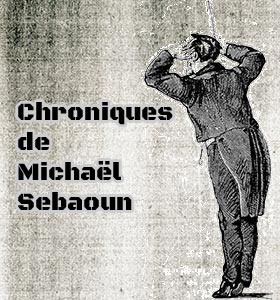
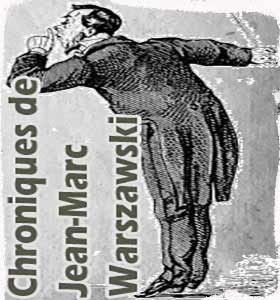
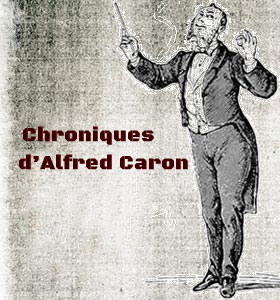
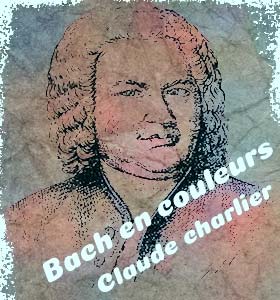
 À propos - contact |
S'abonner au bulletin
| Biographies de musiciens | Encyclopédie musicale | Articles et études | La petite bibliothèque | Analyses musicales | Nouveaux livres | Nouveaux disques | Agenda | Petites annonces | Téléchargements | Presse internationale | Colloques & conférences | Collaborations éditoriales | Soutenir musicologie.org.
À propos - contact |
S'abonner au bulletin
| Biographies de musiciens | Encyclopédie musicale | Articles et études | La petite bibliothèque | Analyses musicales | Nouveaux livres | Nouveaux disques | Agenda | Petites annonces | Téléchargements | Presse internationale | Colloques & conférences | Collaborations éditoriales | Soutenir musicologie.org.
Musicologie.org, 56 rue de la Fédération, 93100 Montreuil, ☎ 06 06 61 73 41.
ISNN 2269-9910.

Dimanche 24 Novembre, 2024

